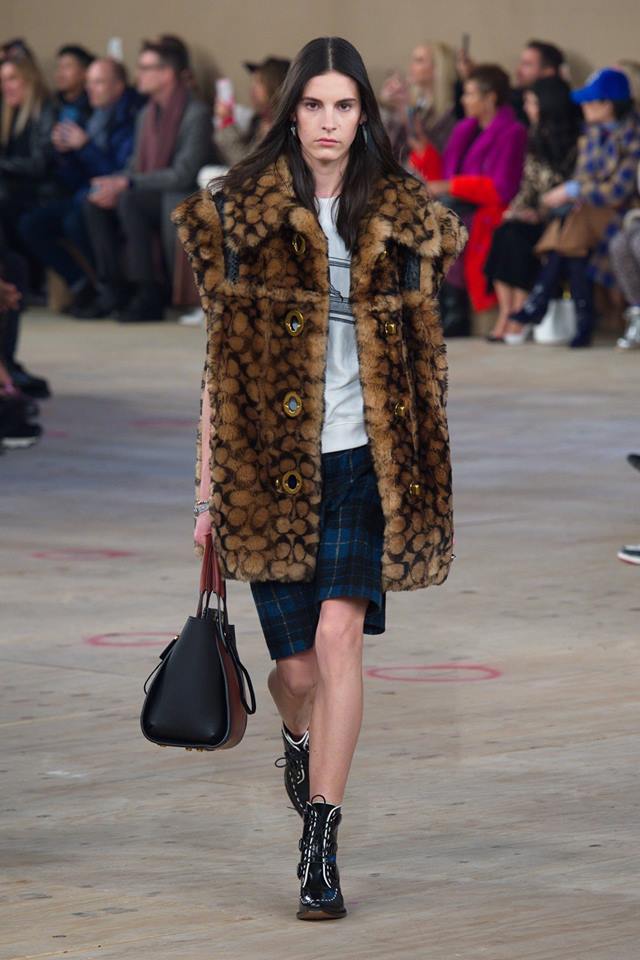Once the site of the New York Stock Exchange, 86 Trinity Place played host to a different kind of American institution on Tuesday afternoon. Fashion brand Coach, founded in 1941, used the venue to showcase its autumn/winter 2019 collection at New York fashion week, which marks five years since British designer Stuart Vevers took over as creative director.
Vevers has, over his tenure, used his outsider’s eye to regenerate an American classic. This combination has worked – in 2017, revenues were $4.5bn (£3.5bn). Themes have included varsity, punk, hip-hop, Disneyland and western – often with a set worthy of a cinema soundstage. Here, the room was covered with raw wooden floors and two brass kinetic sculptures twirled around in the centre.
At first glance, the collection seemed like a continuation on a successful theme – there was rockabilly, grunge and hippy influences. But the mix-up was more apparent and purposeful here – a scrapbooking of youth culture references that showed itself in a parka worn with cowboy boots, or plaid shorts under a slipdress. It would have appealed to the demographic that Coach is focused on – those who get their references on their Instagram feed.

Backstage after the show, Vevers said he was “feeling psychedelic” with colour a central part of his thinking. This led him to look to Kaffe Fassett, the artist and knitwear designer who brought colour and pattern to fashion in the 1960s and 1970s. The prints in this show – chrysanthemums, swirls, foliage and more – were a collaboration with Fassett, who was present at the show. Vevers called him “a magician of colour”.
Vevers praised the shearling pieces included, with Coach’s trademark C stamped on them. Initially unsure when he saw samples that looked messy, he came round. “I thought it’s kind of cool that it’s distorted,” he said. “It gave it more attitude.”
He said that this show was the start of a new chapter at Coach. “I wanted to move forward and try new things but with some American archetypes for me to ground the colour and print,” he said. “I wanted to let the light in.”
While Coach is a stalwart of New York fashion week, the prices are – in designer terms – on the lower side, £375 for a bag rather than, say, £1,500 for one from Gucci. This means they appeal to a younger consumer. Their celebrity alliances show an awareness of who scores big with a twentysomething demographic. Following a collaboration with Selena Gomez (the second most followed person on Instagram), Coach has signed up the actor Michael B Jordan to be their first menswear ambassador this year, who was present at the show. They also dressed five-time nominee RnB singer H.E.R for the Grammys on Sunday.

Earlier in the day, Gabriela Hearst – a label worn by the Duchess of Sussex and Amal Clooney – presented a different idea of American luxury. The Uruguayan designer (who is married to Austin Hearst, an heir to the media empire) showed her first collection since gaining investment from LVMH’s Luxury Ventures, the arm of the conglomerate launched in 2017 to focus on emerging brands. A brand known for sustainability and a soft power aesthetic, Hearst was inspired by Russian ballerina Maya Plisetskaya. Her influence could be seen in body-hugging knits that looked like leotards, soft pleated dresses that had a movement suited to a dancer’s grace and tiered dresses with a Russian feel.
guardian.co.uk © Guardian News & Media Limited 2010
Published via the Guardian News Feed plugin for WordPress.


